#Asbestos Encapsulation
Explore tagged Tumblr posts
Text
TIWI Cork Spray

TIWI Solutions is a reputable company with 17 years of experience in the finishing trade, specialising in Corkspray interior (IWI) and exterior (EWI) insulation. Focused on innovative thermal correction, eliminating black spot mould and condensation, with Thin Internal Wall Insulation (TIWI) - Along side this we strongly focus on Asbestos Encapsulation with RoCL (click here) TIWI Solutions have won the title of highly commended work for the energy efficiency awards 2024.
Website: http://tiwicorkspray.co.uk/
Address: 21 Highnam Business Centre, Highnam, Gloucester, GL2 8DN
Phone Number: 0330 188 2022
Business Hours: Monday - Friday - 09:00am - 05:00pm
1 note
·
View note
Text

Protect Your Space Using Encapsulation Paint
Our asbestos encapsulation paint designed to encapsulate and seal asbestos fibers, our paint offers a protective barrier, making spaces safer for occupants.
0 notes
Text
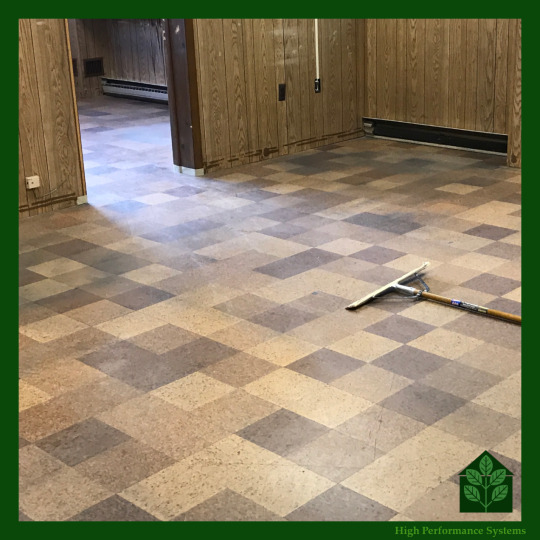
Epoxy flooring is an excellent solution for asbestos encapsulation, providing a durable and seamless barrier that locks in harmful fibers. It ensures a safe, low-maintenance surface while meeting health and safety regulations. This cost-effective method helps preserve the underlying structure without the need for asbestos removal.

#epoxyfloor#epoxyflooring#asbestosencapsulation#FlooringExperts#FlooringSolutions#epoxyfloorcoating#flooringcontractors#FacilityUpgrade#SubscribeNow#CommercialFlooring#epoxy flooring contractors#epoxy floor contractors#epoxy floor#epoxycoating#epoxy flooring contractors nj#commercial flooring#facilitymaintenance#epoxy flooring
3 notes
·
View notes
Text
Life update:
So my life has been very hectic, and what was supposed to be a transition to me living in a new apartment and getting started on commissions has been put on hold because just found out the damaged popcorn ceiling has Asbestos that I may have been exposed to.
For those of you waiting for more art on my part, I will need some more time to sort things out.
Details and venting under the cut. If anyone has advice I will take it.
So yeah, I got a nice apartment that I've not fully moved into because getting furniture into the space has been a trial. But now I don't feel safe at all to fully move in and sleep there knowing that the ceiling contains 6 percent of Chrysotile Asbestos, which wouldn't be complete issue if it was properly sealed and non damaged, but in the kitchen that isn't the case, as when I go into the apartment I noticed that there was a damaged and cracked patch of it on the ceiling. Having heard that popcorn ceiling could contain Asbestos I contacted my landlord on the matter. He sent over some local health inspector consultants to take a sample of the spot. Unfortunately, as I later learned, these people were as familiar with dealing with Asbestos, and their extraction method did a number of things wrong: Mainly they did not where protective masks (opting instead to hold their breath), they did not properly wet the extraction area (which I later learned is what professionals do to avoid kicking up Asbestos), and finally they vacuumed the debris with what I suspect was a vacuum without a proper filter (HEPA filters are what professionals use and talking with this inspector he didn't seem aware that there was a specific filter for treating Asbestos and double checking the type of vacuum they used, that model cannot have HEPA filter installed). So I am very much fearful that given I was present when they were doing this, and because there was damage present to begin with, that I have been exposed and breathed in this toxic material. Additionally, trying to negotiate with my landlord to get the air quality of the apartment tested, filtered and the ceiling encapsulated by a QUALIFIED Abatement professional, is proving to be a bit difficult as be believes (talking to the initial albeit incompetent investigators) that testing air quality and filters isn't needed. I've at least convinced him that he need to contact an actual Asbestos Abatement contractor to repair the ceiling and clear the apartment of any lingering contaminates, but ultimately what happens will be up to him. As for me, I at least have people I've been staying with in the mean time but I cannot stay with them forever, and my things are now moved into that apartment and the prospect of either leaving them there or having to move everything out again is giving me such anxiety and dread. I'm not sure what to do if the landlord doesn't proceed as I would like, if I should take legal action or not. Stuffs been so fudged. And on top of all that, a coworker of mine tested positive for Covid and came to work anyway without a mask on. I CANNOT GET SICK NOW ON TOP OF EVERYTHING!?
If anyone has any advice for me in this situation, I would appreciate it.
I just want a place that's clean and stress free so I can make art for a living, is that so much to ask?
#venting#asbestos#legal advice#law side of tumblr#please help#life update#update#hepa filter#asbestos testing#asbestos lawyer#asbestos removal#chrysotile#covid
5 notes
·
View notes
Text
082623

fall is in the mf tree!!
today was such a big day for me bc the asbestos in my house got encapsulated!!
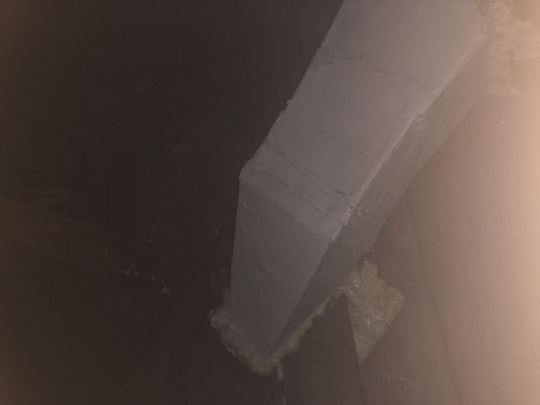
i just had a little bit in my attic. a learning experience!
roses of sharons:

worked today for my newest family

and was just reading this.....it is good but this author is not the easiest to read! or u rly have to take ur time and savor every word and decipher? idk

then i went to paramita to see something blue and sabetye and it was great!
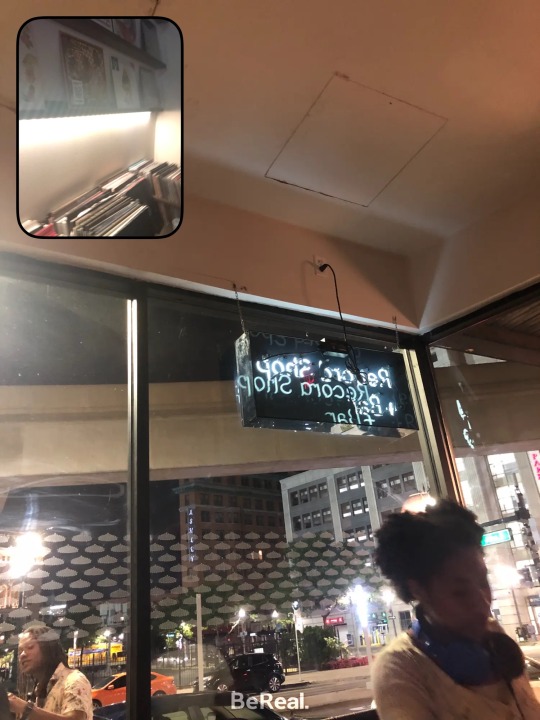
i went alone and found syd who was w a group of friends and i was kind of just sitting near them alone at the bar hanging out i stayed basically til the end and as everyone was walking away i said bye to syd and her group lmao but why did one of the girls in the group was like "where are you going?" i was like to my car and to her friends she was like " i thought we were guarding her!!" hahahaha i was rly tickled by that but tbh they did a great job guarding me bc no man spoke to me or touched me all night!!!!!!! LOVE THAT!!!!!!!!

sadly had to cover this outfit w jacket bc of the cold! but one thing i love about paramita is going to the bathroom in the siren and passing by candy bar to see what is going on in there <3
2 notes
·
View notes
Text
Reliable Asbestos Inspection in Adelaide – Protect Your Property with Watt’s Asbestos
When it comes to ensuring the safety of your home or workplace, nothing should be left to chance—especially when it involves asbestos. If your property was built before the late 1980s, there’s a good chance it may contain asbestos in walls, ceilings, flooring, or roofing. That’s why a professional asbestos inspection in Adelaide is essential. At Watt’s Asbestos, we provide comprehensive asbestos inspections that identify risks early and help you take action before it becomes a serious health hazard.
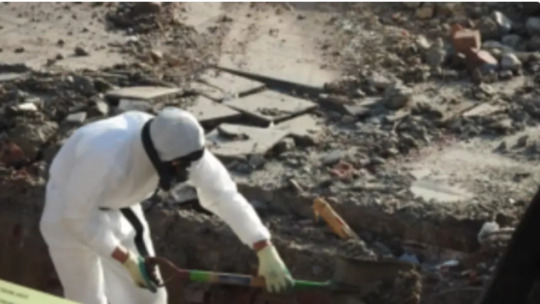
Asbestos exposure can lead to life-threatening conditions such as mesothelioma, asbestosis, and lung cancer. Unfortunately, asbestos-containing materials are not always easy to spot. That’s where our experienced team comes in. Using the latest testing and diagnostic methods, we thoroughly assess your property, take samples when necessary, and deliver clear, detailed reports outlining any presence of asbestos.
Whether you’re planning renovations, demolishing a structure, or buying a new property, a thorough asbestos inspection is a critical step in protecting everyone who lives or works on the site. Our inspections are carried out in accordance with South Australian regulations and backed by years of industry experience.
At Watt’s Asbestos, we pride ourselves on being fast, reliable, and transparent. We’ll explain our findings in plain language and provide expert guidance on the next steps—whether that involves monitoring, encapsulation, or removal.
For peace of mind and proactive property safety, trust Watt’s Asbestos for your asbestos inspection in Adelaide.
Contact us today to book your inspection and ensure your property is safe, compliant, and asbestos-free.
Name - Watt’s Asbestos
Address - 7B Anderson St, Barmera SA 5345
Phone NO. - +0428840451
Website - https://wattsasbestos.com.au/asbestos-inspection-adelaide/
0 notes
Text
Breathing Easy: A Guide to Asbestos Removal in Aotearoa
For many homeowners and businesses across New Zealand, the discovery of asbestos can trigger understandable concern. Once hailed as a miracle material for its fire-resistant and insulating properties, we now understand the serious health risks associated with its fibres. If your property contains this legacy material, you're likely considering its safe removal.
Rest assured, the process is a carefully orchestrated series of steps designed to protect both people and the environment. This guide will walk you through what to expect, from the initial assessment to the final all-clear.
Uncovering the Hidden Threat: Inspection and Testing
The journey towards an asbestos-free environment begins with identification. You can't manage what you don't know is there. This crucial first stage involves a thorough inspection of your property by qualified professionals.
They will meticulously examine areas where asbestos-containing materials (ACMs) were commonly used, such as old insulation, textured ceilings (often called "popcorn ceilings"), vinyl floor tiles, roofing, and wall cladding.
Due to the difficulty in visually identifying asbestos, sampling and laboratory testing are essential. A trained surveyor will carefully collect small samples of suspect materials, ensuring minimal disturbance to prevent fibre release. These samples are then sent to an accredited laboratory for analysis.
This scientific approach provides definitive confirmation of the presence and type of asbestos. Understanding the type is important as it can influence the removal methodology.
Clients can expect a detailed report outlining the findings of the inspection and testing, including the location and type of any identified asbestos. This report forms the foundation for the subsequent removal plan.
Sealing Off the Danger: Establishing Containment
Once asbestos is confirmed, the next critical step is containment. This is where the expertise of licensed asbestos removalists truly shines. The goal of containment is to create a sealed and controlled environment to prevent the release of hazardous asbestos fibres into the surrounding air.
Think of it like creating a miniature, temporary cleanroom around the affected area. This typically involves:
Physical Barriers: Erecting robust barriers using materials like thick polythene sheeting to completely isolate the work area from the rest of the property. These barriers are carefully sealed with specialised tape.
Negative Pressure Systems: Installing high-efficiency particulate air (HEPA) filtered ventilation units that create negative air pressure within the containment. This means that any air movement is inwards, preventing fibres from escaping. The filtered air is then safely discharged outside.
Warning Signage: Clearly displaying warning signs around the work area to alert everyone to the ongoing asbestos removal work and the associated hazards.
Clients should expect to see their property temporarily transformed with these containment measures in place. While it might seem disruptive, it's a vital step in ensuring the safety of everyone involved.
The Delicate Task: Asbestos Removal
With the containment established, the meticulous process of asbestos removal can begin. This work is carried out by trained and equipped professionals wearing full personal protective equipment (PPE), including respiratory protection (often full-face respirators with P3 filters), disposable coveralls, gloves, and eye protection.
The removal methods employed depend on the type and condition of the ACM. Common techniques include:
Wet Removal: Where possible, ACMs are thoroughly wetted down with a special solution. This significantly reduces the release of airborne fibres during removal.
Careful Dismantling: Materials are carefully dismantled and removed in manageable sections, avoiding breaking or crushing them.
Encapsulation (Less Common for Removal): In some specific cases, instead of removal, the asbestos might be encapsulated with a sealant to prevent fibre release. However, for complete removal, this is a temporary measure.
All removed asbestos waste is immediately placed into approved, labelled, and sealed containers (typically double-bagged in heavy-duty polythene bags or placed in sealed drums). These containers are then carefully moved out of the containment area without compromising its integrity.
Clients can expect the removal process to be conducted methodically and with utmost care. While it may take time, depending on the extent of the asbestos, the focus is always on safety and preventing fibre release.
Cleaning Up: Decontamination and Clearance
Once the asbestos has been removed, the work area undergoes a thorough cleaning and decontamination process. This involves:
Visual Inspection: A meticulous visual inspection to ensure all visible asbestos debris has been removed.
Wet Cleaning: Surfaces within the containment area are repeatedly wet-wiped and vacuumed using HEPA-filtered vacuums specifically designed for asbestos removal. Standard vacuum cleaners are not suitable as they can release fibres into the air.
Air Monitoring (Clearance Testing): After the cleaning is complete, air samples are collected from within the containment area and analysed by an independent accredited laboratory. These tests confirm that the airborne fibre levels are below the stringent regulatory limits.
Only when the clearance air monitoring results are satisfactory is the containment structure dismantled. This signifies that the area is safe for re-occupancy.
Clients will receive a clearance certificate from the independent laboratory, providing documented proof that the asbestos removal and decontamination process has been completed safely and effectively. This certificate is an important document for future property transactions.
Navigating the Rules: Regulations and Compliance
In New Zealand, the removal of asbestos is strictly regulated to protect public health and the environment. The key regulatory body is WorkSafe New Zealand, which sets out the Health and Safety at Work (Asbestos) Regulations 2016. These regulations cover various aspects, including:
Licensing: Only licensed asbestos removalists can undertake work involving friable asbestos (materials that can be easily crumbled by hand) and certain types of non-friable asbestos removal. There are two classes of licenses, Class A and Class B, depending on the type and quantity of asbestos being removed.
Notifications: For certain asbestos removal work, notification to WorkSafe is mandatory before work commences.
Safe Work Practices: The regulations outline specific safe work practices that must be followed during all stages of asbestos removal, including risk assessment, control measures, PPE requirements, and waste disposal.
Air Monitoring and Clearance: Independent air monitoring and clearance testing are often required to ensure the effectiveness of the removal and decontamination process.
Waste Disposal: Asbestos waste must be handled, transported, and disposed of at authorised landfills in accordance with strict guidelines.
Clients can expect their chosen asbestos removal contractor to be fully compliant with all relevant regulations and licensing requirements. It's wise to verify their credentials and ensure they have a thorough understanding of the legal framework.
What Clients Can Expect: Transparency and Professionalism
Throughout the asbestos removal process, clients can and should expect clear communication, transparency, and professionalism from their chosen contractor. This includes:
Detailed Quotations: A comprehensive and transparent quotation outlining the scope of work, methodology, and costs involved.
Clear Communication: Regular updates on the progress of the work and any potential issues that may arise.
Respect for Your Property: Contractors should treat your property with respect and minimise disruption as much as possible.
Professional Conduct: Polite, knowledgeable, and safety-conscious workers.
Documentation: Provision of all relevant documentation, including the asbestos survey report, removal control plan, waste disposal dockets, and the independent clearance certificate.
Hidden Killer in Your Kiwi Home? Your Step-by-Step Guide to Safe Asbestos Removal. Don't let the silent threat of asbestos linger. If you suspect this hazardous material on your property, this essential guide walks you through the entire removal process in Aotearoa, from expert inspection and secure containment to meticulous removal and the final all-clear.
Understand the regulations and know exactly what to expect for a safer, healthier home.
0 notes
Text
The Asbestos Testing Process: What to Expect When You Need a Professional
If you live in an older home or plan to renovate a property built before the 1990s, asbestos testing is something you shouldn’t overlook. If you suspect asbestos in your home or workplace, professional asbestos testing in Melbourne is the safest and most reliable option. Here's what to expect from the process.
Why Asbestos Testing Matters
Before diving into the steps, it's essential to understand why testing and asbestos collection near me is important. Inhaling asbestos fibres can cause serious diseases like asbestosis, mesothelioma, and lung cancer. Asbestos-containing materials (ACMs) are often found in roofing, insulation, flooring, and cement sheeting. They are generally safe when left undisturbed, but any renovation or damage can release harmful fibres into the air.
Step-by-Step Overview of the Testing Process
Initial Assessment and Consultation
A licensed asbestos assessor or inspector begins by asking about the age of the property, previous renovations, and the reason for the testing. They'll also conduct a visual inspection to identify possible asbestos-containing materials.
Sample Collection
If potential ACMs are identified, small samples are carefully taken using proper safety measures. The goal is to avoid disturbing the materials more than necessary. Inspectors wear protective gear and follow strict procedures to minimise contamination or exposure.
Laboratory Testing
Collected samples are sent to a NATA-accredited laboratory (in Australia) or an equivalent certified lab elsewhere. The lab uses specialised equipment to determine whether asbestos is present and in what quantity.
Results and Reporting
Once testing is complete, the professional will provide a detailed report outlining:
Recommendations for management, removal, or further action
The condition and location of the material
The type of asbestos (e.g., chrysotile, amosite, crocidolite)
Whether asbestos was detected
Next Steps
If asbestos is found, the professional may suggest encapsulation, regular monitoring, or complete removal by a licensed asbestos removalist, depending on the severity and risk level.

Asbestos testing isn’t something you should handle yourself. Disturbing asbestos materials without proper training can be dangerous. Hiring a qualified professional ensures accurate results and gives you peace of mind—especially if you're planning renovations or concerned about the safety of your property.
Source
0 notes
Text
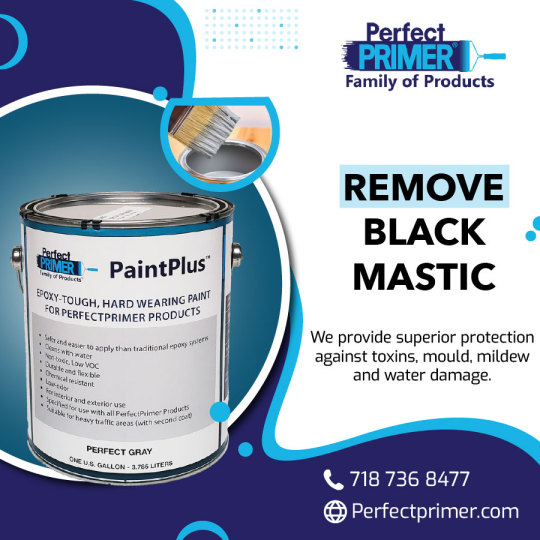
Create a Clear Workspace
Consult with our professionals who specialize in black mastic removal to ensure the proper handling and disposal of the materials.
#bluebearbean-e-doo#asbestosfloortileremoval#asbestos floor tile removal#asbestos encapsulation paint
0 notes
Text
Best Asbestos Removal Company in Antrim

Welcome to Asbestos Environmental Limited, Northern Ireland's professional choice in Asbestos Removals. We can offer you a wide range of services in asbestos removals, encapsulation and decontamination services to suit our clients individual needs, with our highly trained workforce and the state-of-art equipment.
1 note
·
View note
Text
Why Asbestos Testing Matters for Townsville Properties
Asbestos remains a hidden danger in many Townsville homes and businesses built before 1990. Found in walls, flooring, and roofing, asbestos fibres pose severe health risks if disturbed during renovations or demolitions. Professional asbestos testing Townsville is critical to identify and manage these hazards safely.
Key Reasons to Test for Asbestos in Townsville
Health Protection: Airborne asbestos fibres can cause lung diseases, including mesothelioma.
Pre-Renovation Safety: Testing prevents accidental exposure during upgrades or repairs.
Compliance: Queensland regulations require asbestos assessments for older properties.
How Testing Works
Inspection: Licensed professionals like Airsafe or Inspect My Home collect samples from suspected materials.
Lab Analysis: NATA-accredited labs (e.g., Airsafe’s facility) confirm asbestos presence with precision.
Reporting: Detailed results guide safe removal or encapsulation plans.
Choosing a Trusted Provider Opt for NATA-accredited services like Airsafe Townsville, which offers fixed pricing and fast turnaround times. Avoid unaccredited “cheap” tests that risk inaccurate results.
1 note
·
View note
Text
Eliminate Risk with Expert Lead Paint Removal Service | Asbestos Removal Bay Area
Protect your home and your health with our professional lead paint removal service in the San Francisco Bay Area. Lead-based paint, commonly found in older homes, poses serious risks—especially to children and pregnant women. Our certified team uses industry-approved methods to safely remove or encapsulate lead paint while minimizing exposure to harmful dust and particles. Whether you're renovating, selling, or simply making your home safer, we tailor our services to fit your specific needs. With years of experience, compliance with local regulations, and a focus on safety, we deliver peace of mind and healthier living spaces. Don’t take chances—schedule your lead paint removal service with Asbestos Removal Bay Area today!
0 notes
Text
Asbestos Removal Service Provider Company

Asbestos is a naturally occurring, fibrous mineral. Since it’s organic, you’d think it would be completely safe! However, medical professionals have linked asbestos exposure to countless medical problems for decades. Hence, this process is highly regulated, and must only be performed by licensed professionals. Removal may be required when remodeling or making major changes to your home will disturb asbestos-containing material. Also, removal may be called for if asbestos-containing material is damaged extensively and cannot be otherwise repaired. Removal is complex and must be done only by a trained and accredited asbestos professional. Improper removal may actually increase your and your family’s exposure to asbestos fibers. After the asbestos has been removed, there is a final step in which an independent third-party subcontractor will conduct a visual inspection and take air samples - Rubbish Removal.
Asbestos used to be a common siding material because it is resistant to fire. Not all states require asbestos siding removal, so those who choose to encapsulate it instead can expect to pay a slightly lower price. The most important first step is to not touch the suspicious materials. Individuals should not touch or handle materials that may contain asbestos and should avoid the area until an asbestos removal contractor can test them - Asbestos removal and clean up.
A long list of satisfied clients will attest to our ability to complete projects on time and within budget The most recent study showed evidence that certain construction types may release asbestos fibers if asbestos-containing materials are present. Noteworthy is that sources are pointing out a relation between the presence of asbestos-causing materials and link to exposure and health effect and none of the studies have clearly absolved the possibility of risk. Asbestos-containing products in good condition and completely intact are generally considered safe. But renovation or demolition of older buildings may disturb asbestos-containing materials and release fibers into the air.
Asbestos sealing, sometimes called encapsulation, involves coating the materials with a sealant that either binds the asbestos fibers together or coats the material so fibers can’t be released. The average cost of asbestos removal for a residential project is but remember every project is different. Asbestos found in floor tiles would be considered non friable since you can’t easily crush the asbestos in your hand. For more information, please visit our site https://simcatgroup.com.au/
0 notes
Text
A Complete Guide to Identifying Asbestos in Your Home
Asbestos was widely used in homes built before the 1980s due to its heat resistance, strength, and insulating properties. However, it is now known to pose serious health risks, including lung diseases and cancer. If you live in an older home, it is essential to know how to identify asbestos-containing materials (ACMs) and take appropriate action. This guide will help you understand where asbestos might be found, how to identify it, and what steps to take if you suspect its presence.
Where Can Asbestos Be Found in Your Home?
Asbestos was commonly used in various building materials, including:
Insulation: Found in attics, walls, and around heating systems.
Flooring: Vinyl tiles and adhesives may contain asbestos.
Ceilings: Popcorn ceilings and textured coatings.
Walls: Some cement sheets, drywall compounds, and plasters.
Roofing: Shingles, felt, and siding materials.
Pipes and Ducts: Used for lagging, wrapping, and sealing joints.
Fireproofing Materials: Fireplace bricks, gaskets, and fire-resistant doors.
How to Identify Asbestos in Your Home
1. Check the Age of Your Home
If your home was built before the 1980s, there is a higher likelihood that asbestos is present. However, newer homes may also contain asbestos in certain materials.
2. Look for Common Asbestos-Containing Materials
Inspect areas like flooring, ceiling tiles, insulation, and old pipes. If they appear aged, cracked, or worn out, they may contain asbestos.
3. Use Manufacturer Labels and Documentation
Check any remaining product labels or building records to determine if asbestos was used in construction materials.
4. Hire a Professional Inspection
The most reliable way to confirm the presence of asbestos is through professional testing. Certified asbestos inspectors collect samples and analyze them in a laboratory.
What to Do If You Suspect Asbestos
Do Not Disturb It
If asbestos-containing materials are in good condition, leave them undisturbed. Disturbing these materials releases dangerous fibers into the air.
Avoid DIY Removal
Removing asbestos on your own is hazardous and may be illegal in some areas. Instead, hire a licensed asbestos removal professional in Perth.
Consider Encapsulation or Sealing
In some cases, asbestos materials can be sealed or encapsulated to prevent fiber release without complete removal.
Follow Local Regulations
Check with local authorities for laws regarding asbestos handling and removal in your area.
Conclusion
Identifying asbestos in your home is crucial for your safety. If you suspect asbestos, do not attempt to remove it yourself—consult a professional for testing and proper management. By taking the right precautions, you can protect yourself and your family from the serious health risks associated with asbestos exposure.
0 notes
Link
0 notes
Text
Comprehensive Asbestos Testing in Adelaide: Why It Matters
Asbestos was once widely used in Australian construction for its heat resistance and durability. However, we now know that exposure to asbestos fibres can cause serious health issues, including lung disease and cancer. If your property was built before the late 1980s, there’s a high chance it may contain asbestos. That’s where Watt’s Asbestos comes in — your trusted specialists for asbestos testing in Adelaide.
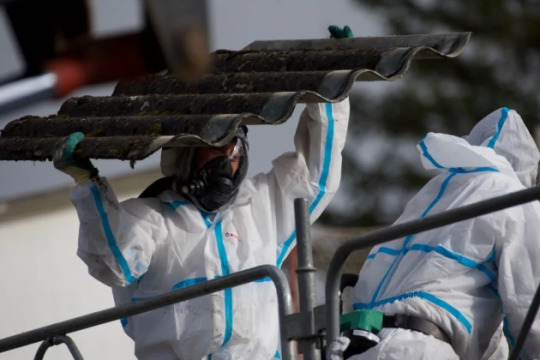
At Watt’s Asbestos, we understand the importance of accurate testing. Whether you’re renovating, demolishing, buying, or selling a property, professional asbestos testing ensures your safety and legal compliance. Our qualified technicians use advanced sampling and laboratory analysis methods to identify asbestos-containing materials (ACMs) in various forms — from wall sheeting and roofing to flooring and insulation.
We conduct both visual inspections and laboratory-confirmed testing, providing clear, detailed reports so you know exactly what you're dealing with. Our team also offers guidance on the next steps, whether it's monitoring, encapsulation, or full removal.
What sets Watt’s Asbestos apart is our commitment to professionalism, safety, and transparency. We work with homeowners, builders, real estate professionals, and businesses across Adelaide to deliver prompt and reliable asbestos testing services.
Don’t leave your health and safety to chance. If you suspect the presence of asbestos, reach out to Watt’s Asbestos for trusted asbestos testing in Adelaide. We’re here to give you peace of mind with expert advice and accurate results—every time.
Name - Watt’s Asbestos
Address - 7B Anderson St, Barmera SA 5345
Phone NO. - +0428840451
Website - https://wattsasbestos.com.au/asbestos-testing-adelaide/
0 notes